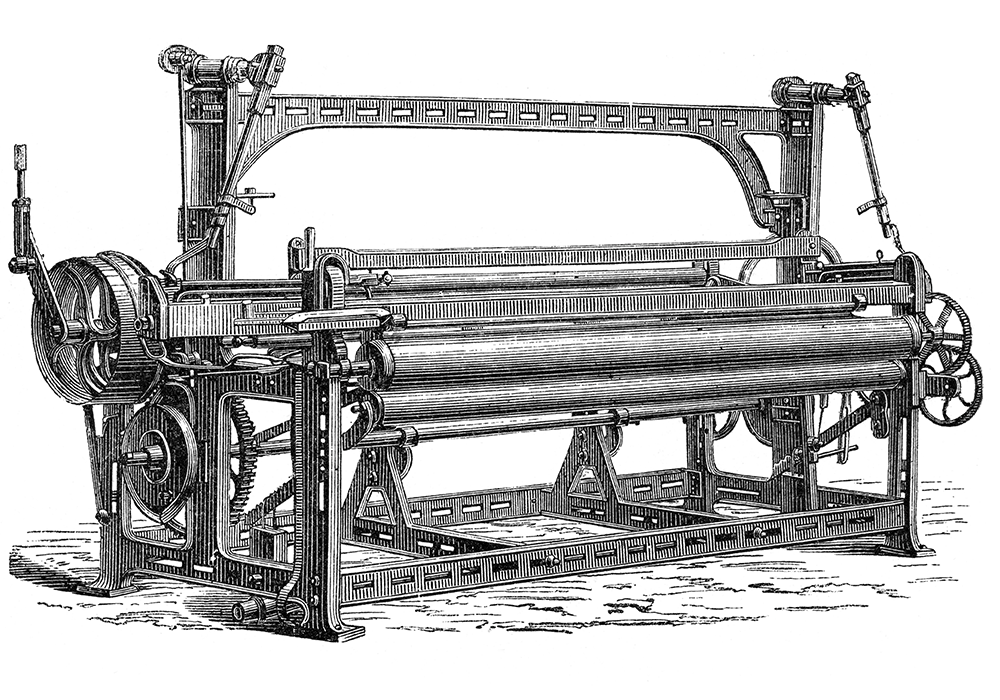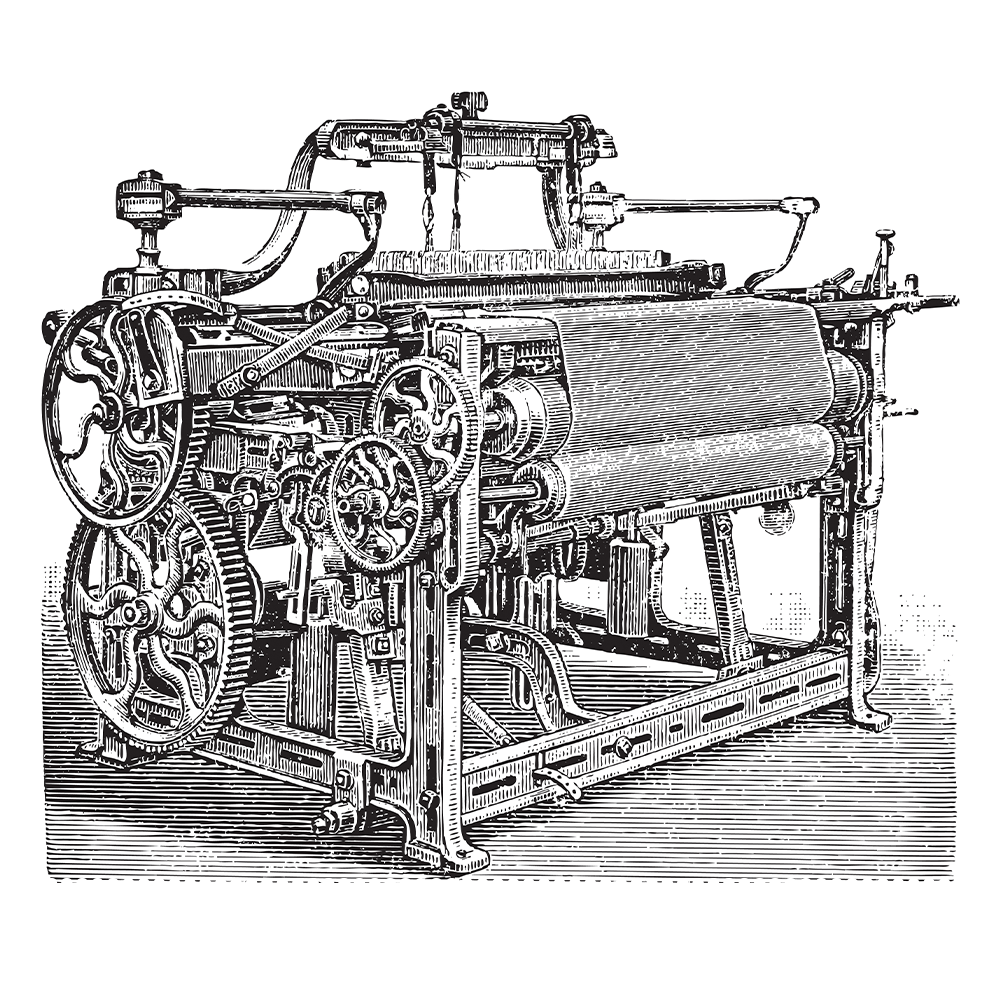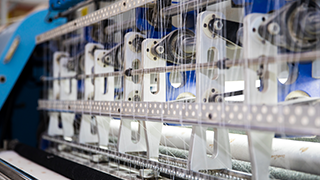History of Weaving
History of Weaving
There is evidence that the first weaving looms were in use 4,000 years ago. It was around this time that most civilizations developed their own version of the hand-operated loom. The Weaver’s Craft Guild was created in 1100 A.D. in England to support the craft of weaving. For centuries, weaving remained strictly a cottage industry where all weaving took place in the home. It wasn’t until the industrial revolution in the 1700s that the factory system became more prevalent that the cottage industry. This was the beginning of modern-day factories. Weaving technology has evolved from the first simple hand loom to today’s high-tech machines.
John Kay & the Flying Shuttle
The first major technological advance in weaving came when John Kay invented the flying shuttle in 1733 which allowed the shuttle to be thrown through the shed without having to be placed manually through the warp yarns.
Joseph-Marie Jacquard & the Jacquard Loom
This was followed by the development of the jacquard loom by Joseph-Marie Jacquard between 1801 and 1805. The jacquard loom is considered by most to be the first key punch operated, computer-like system ever made.
The jacquard loom was so revolutionary that the French government purchased the system five years later in order to control its use. Because the system threatened the hand weavers’ monopoly they revolted, burning many jacquard looms and forcing Jacquard himself to flee his hometown for fear of his life.
The Knowles Brothers & the Steam-Powered Loom
In 1837, Lucius J. and Francis B. Knowles developed the first upright loom powered by a steam engine but they were not granted a patent for their design until 1856.
By the end of the Industrial Revolution, ninety percent of all weaving looms in North America were automated. These major innovations in weaving resulted in higher-quality fabric and a faster rate of production.

Shuttle

Jacquard Weaving Loom

Steam-Powered Loom


